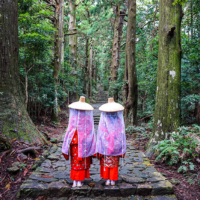THE WAY OF WASHOKU
Mar 24, 2002
Mar 17, 2002
Mar 3, 2002
Feb 24, 2002
Feb 17, 2002
Feb 10, 2002
Feb 3, 2002
Jan 27, 2002
Jan 20, 2002
Jan 13, 2002
Dec 30, 2001
Dec 23, 2001
Dec 16, 2001
Dec 9, 2001
Dec 2, 2001
Nov 25, 2001
Nov 18, 2001




















